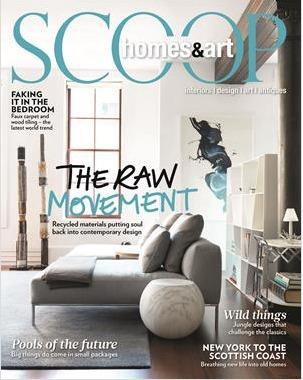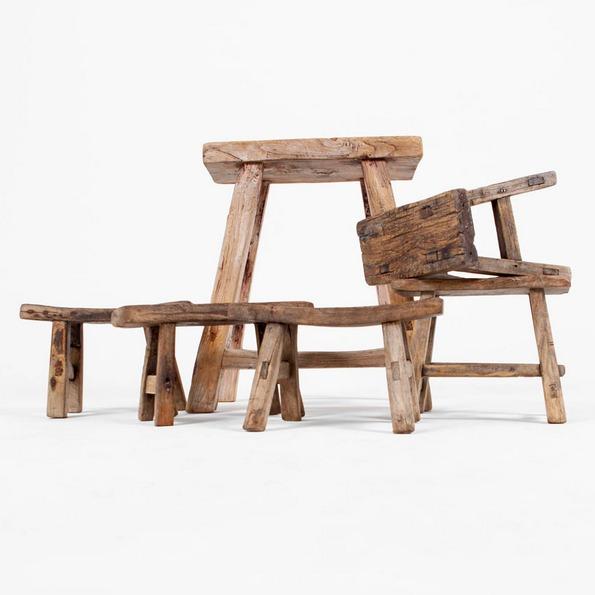Published in Scoop Homes & Art, Summer 2013/14
The search for quality Chinese pieces is growing harder, as collector interest reaches its peak
The London suburb of West Ruislip feels half a world away from South Kensington, home to fabled auction house Christie’s – the unofficial epicenter of the global art world. But in November 2010, an exquisite porcelain vase – etched with the turquoise-and-gold fish motif associated with the Qianlong Dynasty – put the unassuming borough on collectors’ maps. The vase, sold by family auctioneers Bainbridge’s and purchased by an anonymous Chinese billionaire for £43 million, set a new sale record for Oriental art. And although the piece was resold a year later, thanks to the buyer’s mysterious disappearance, it signaled a bold new chapter for the Chinese antiques market.
“The Chinese market is the market of the moment,” says Walter Antoniazzi, antique specialist and owner of Louis Antiques. “When I’m in Europe for buying trips, the sold stickers that once belonged to American dealers are now dominated by buyers from Shanghai and Beijing.”
For Antoniazzi, this influx of Chinese buyers stems from the explosive growth of the country’s middle class – a trend that has renewed national interest in traditional artifacts and interior decoration as well as lavish displays of wealth. “We saw the same thing twenty years ago when the Soviet Union collapsed,” he adds. “It’s the first wave of buyers and we don’t know when it will end.”
Paul Bowler, director of Matilda Antiques Centre in North Fremantle, is seeing this shift replicated closer to home. “In the last four years, we’ve been answering more queries and shipping more pieces to mainland China,” he says.
This is also shaking up global auction houses – Christie’s held its first Shanghai auction in September 2013, in a bid to tap into the lucrative market and in April 2011, a Melbourne Sotheby’s auction saw a rare Chinese Famille Rose vase fetch $480,000.
Bowler also observes that buyers are exercising new levels of discernment when shopping for Chinese antiques and using technology to hunt down flawless purchases. “We regularly get asked if we have good porcelain in the shop and buyers often scrutinise each piece multiple times,” he says. “Often, they take photos with their smartphones and send pictures back to China for further research.”
However, China’s new love affair with antiques goes beyond the aesthetic. It’s also part of a nationalistic push to recognise a tradition of craftsmanship, dating back to the Tang Dynasty (618 AD) and spanning everything from ceramics and woodwork to earthenware and lacquerware, that – until now – has been tragically overlooked.
It’s this mastery – emulated by European artisans such as Josiah Wedgwood centuries later – that drives both desirability and financial value for Western and Chinese buyers.
“The Chinese have been masters of porcelain and ceramic work for centuries. You can buy a piece of porcelain from the ninth century that was made at a specific kiln in a specific reign by a specific maker and it will be worth millions,” Bowler explains. “It really comes down to the credibility of the potter himself and how he stands in terms of his relationship to the Imperial Court. Another piece of porcelain that looks the same, but perhaps wasn’t made by the same master, won’t come anywhere near that kind of price.”
But for Adam Liebson, a Sydney dealer specialising in Chinese furniture and collectibles such as ornate redwood storage chests and intricate blue and white porcelain from the late Ch’ing Dynasty (1644-1912), this new demand is creating serious scarcity issues. Liebson, who sources his pieces from the Shanxi, Hebei and Tianjin provinces in Northern China and the Guangxi region in Southern China, feels that high-quality pieces are becoming increasingly difficult to source.
“Chinese antiques are running out,” he says. “We used to source our antiques at massive warehouses and we could easily import them in. These days, we have to do all the legwork, visit faraway country regions and go from dealer to dealer before sending pieces to our factory in China where they complete the restoration.”
Liebson also notes that serious collectors that may have once taken a purist’s approach to Chinese antiques are embracing a more offbeat aesthetic. “When it comes to interior decoration, it’s becoming more and more of a cross-pollination of cultures. Clients are blending Chinese pieces with French Provincial furniture, for instance. It’s become very versatile,” he says.
This has also stoked an obsession with raw, unpolished pieces of furniture – softwood tables, clay pottery or elegant bowls minus the signature jade glaze – best suited to a casual living environment.
Still, there’s nothing quite as powerful as being in the presence of an original.
“We often look at a piece of English porcelain – Wedgwood or Royal Doulton – and we appreciate beauty, rarity or collectability,” says Bowler. “But Chinese antiques have an ethereal quality. In China, porcelain is valued because it embodies the spirit of the people as well as the context under which it was made.”

